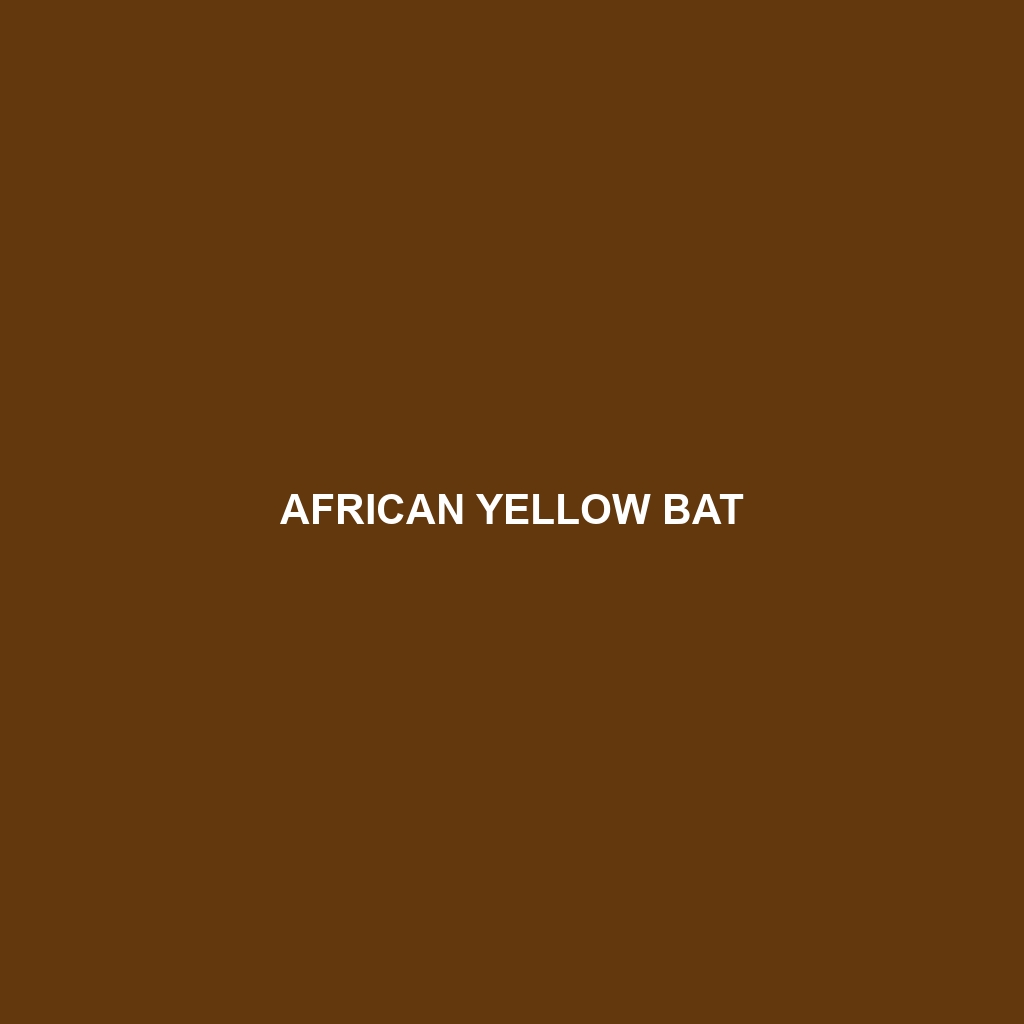Species Description: African Yellow Bat
Common Name: African Yellow Bat
Scientific Name: Hypsugo musciculus
Habitat: The African Yellow Bat is primarily found in various regions across sub-Saharan Africa. It thrives in tropical and subtropical forests, woodlands, and often inhabits near rivers and wetlands. These bats prefer environments that provide both roosting and hunting opportunities, including dense foliage and tree cavities, which offer protection from predators.
Physical Characteristics: The African Yellow Bat is relatively small, with a body length ranging from 8 to 10 cm and a wingspan of about 20-25 cm. Its fur is a striking golden-yellow color, sometimes with brown or gray highlights on the back. The bat has a rounded face with large eyes, making it well-adapted for nocturnal activities. Its distinctive features include pointed ears and long, slender wings that facilitate agile flight through the forest canopy.
Behavior: African Yellow Bats are primarily nocturnal and exhibit fascinating behaviors such as foraging and roosting in small colonies. They are known for their agility in flight, often capturing insects mid-air. These bats communicate through a series of high-frequency sounds, which they use for navigation and social interaction. During the day, they hide in foliage or tree hollows, making them hard to spot.
Diet: The diet of the African Yellow Bat consists mainly of insects, including moths, beetles, and flies. They utilize echolocation to hunt effectively, allowing them to locate prey even in complete darkness. This insectivorous feeding habit plays a critical role in controlling insect populations in their habitats, thus maintaining ecological balance.
Reproduction: The reproductive habits of African Yellow Bats involve a breeding season that typically peaks in the wet months when food is abundant. Mating usually occurs in late spring, and females give birth to one or two pups after a gestation period of about 45 days. Mothers are highly attentive to their young, providing milk and protection during the early weeks of life, which is crucial for the pups’ survival.
Conservation Status: The African Yellow Bat is currently classified as “Least Concern” according to the IUCN Red List. However, habitat loss due to deforestation and urbanization poses threats to their populations. Conservation efforts are essential to ensure their habitats remain intact and to monitor their population trends.
Interesting Facts: One fascinating aspect of the African Yellow Bat is its ability to adapt to various habitats, which allows it to thrive in changing environmental conditions. They are often mistaken for other bat species due to their coloration and behavior, making them a subject of interest for researchers and wildlife enthusiasts alike.
Role in Ecosystem: African Yellow Bats play an important role in their ecosystem as natural pest controllers. By preying on insects, they help maintain the balance of insect populations, which can benefit agricultural practices. Additionally, their presence indicates a healthy environment, making them integral to biodiversity in their habitats.
